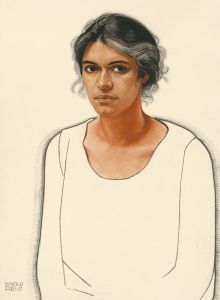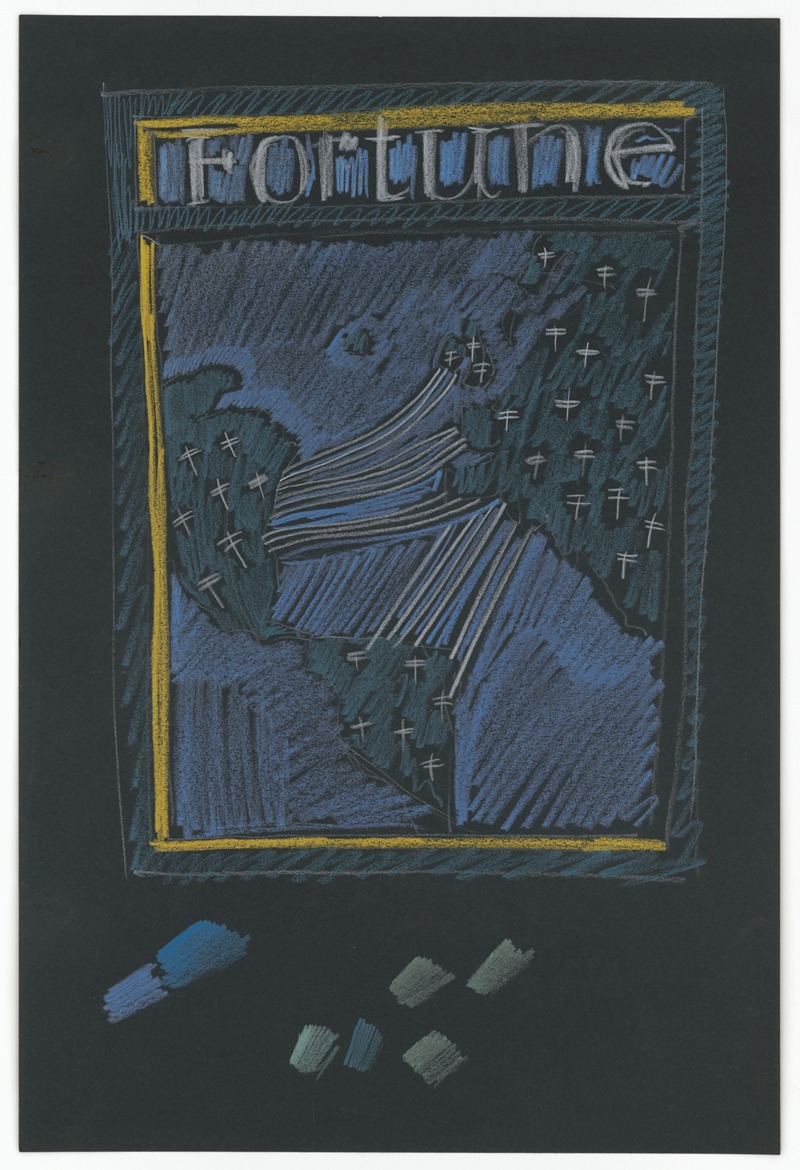
Graphic designs for Fortune Magazine.] [Study for cover with telephone lines at different locations on the globe
A hand-painted replica of Winold Reiss’s masterpiece Graphic designs for Fortune Magazine.] [Study for cover with telephone lines at different locations on the globe, meticulously crafted by professional artists to capture the true essence of the original. Each piece is created with museum-quality canvas and rare mineral pigments, carefully painted by experienced artists with delicate brushstrokes and rich, layered colors to perfectly recreate the texture of the original artwork. Unlike machine-printed reproductions, this hand-painted version brings the painting to life, infused with the artist’s emotions and skill in every stroke. Whether for personal collection or home decoration, it instantly elevates the artistic atmosphere of any space.
Winold Reiss (1886-1953) was a German-American artist and graphic designer known for his vibrant and innovative contributions to American art and design, particularly in the early to mid-20th century. One of his notable works includes a study for a cover of Fortune Magazine, titled "Graphic designs for Fortune Magazine: Study for cover with telephone lines at different locations on the globe."
Reiss was born in Karlsruhe, Germany, and studied at the Royal Academy of Fine Arts in Munich. He immigrated to the United States in 1913, where he established himself as a prominent artist and designer. His work spanned various mediums, including painting, illustration, and graphic design. Reiss is particularly recognized for his portraits of Native Americans and African Americans, as well as his contributions to the Harlem Renaissance.
The study for the Fortune Magazine cover exemplifies Reiss's skill in integrating modernist aesthetics with commercial art. Fortune Magazine, founded in 1930 by Henry Luce, was known for its high-quality journalism and visually striking covers. The magazine often commissioned leading artists and designers of the time to create its covers, making it a showcase for contemporary art and design.
Reiss's study for the cover features an intricate design of telephone lines connecting different locations around the globe. This imagery reflects the burgeoning importance of global communication and the technological advancements of the era. The telephone, a relatively recent invention at the time, was revolutionizing the way people communicated, making the world feel smaller and more interconnected. Reiss's design captures this sense of connectivity and progress, aligning with Fortune Magazine's focus on business, industry, and innovation.
The use of telephone lines in the design also highlights Reiss's ability to blend artistic creativity with thematic relevance. His work often incorporated elements of modernism, characterized by bold lines, geometric shapes, and a sense of dynamism. This approach not only made his designs visually appealing but also conveyed the forward-thinking spirit of the times.
Reiss's contribution to Fortune Magazine is a testament to his versatility as an artist and his ability to adapt his style to different contexts. His work for the magazine is just one example of his broader impact on American visual culture. Throughout his career, Reiss remained committed to exploring new artistic possibilities and pushing the boundaries of traditional design.
In addition to his commercial work, Reiss was also a dedicated educator. He taught at the New York School of Applied Design for Women and the Art Students League of New York, influencing a new generation of artists and designers. His legacy is preserved in various collections, including the Smithsonian American Art Museum and the New York Public Library.
Overall, Winold Reiss's study for the Fortune Magazine cover with telephone lines is a significant piece that reflects the intersection of art, technology, and communication in the early 20th century. It showcases his ability to create compelling visual narratives that resonate with contemporary themes and his enduring influence on the field of graphic design.





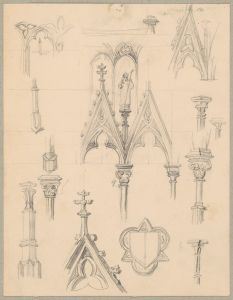
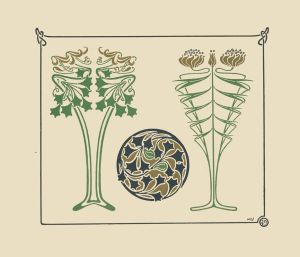
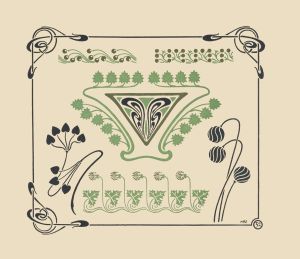

![Graphic design for Fisk Jubilee Singers.] [Concert poster with harp and mask motif](/imgs/249251/s/winold-reiss-graphic-design-for-fisk-jubilee-singers-concert-poster-with-harp-and-mask-motif-3c54d344.jpg)
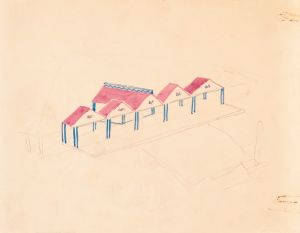
![Graphic textile or wallpaper designs with geometric patterns.] [Interior; mural color study, tropical theme with palm trees](/imgs/249359/s/winold-reiss-graphic-textile-or-wallpaper-designs-with-geometric-patterns-interior-mural-color-study-tropical-theme-with-palm-trees-aa2f4d5f.jpg)
![Interior design sketches for Alamac Hotel, 71st and Broadway, New York, NY.] [Study of interior perspective for ‘Africa Roof’](/imgs/249367/s/winold-reiss-interior-design-sketches-for-alamac-hotel-71st-and-broadway-new-york-ny-study-of-interior-perspective-for-africa-roof-91fb1603.jpg)
![Interior perspective studies for Restaurant Crillon, 15 East 48th Street, New York, NY.] [Interior perspective study](/imgs/249376/s/winold-reiss-interior-perspective-studies-for-restaurant-crillon-15-east-48th-street-new-york-ny-interior-perspective-study-237ead1d.jpg)
![Interior perspective studies for Restaurant Crillon, 15 East 48th Street, New York, NY.] [Study for Batik Room or Main Dining Room](/imgs/249377/s/winold-reiss-interior-perspective-studies-for-restaurant-crillon-15-east-48th-street-new-york-ny-study-for-batik-room-or-main-dining-room-f49c2d45.jpg)
![Miscellaneous small sketches for inlaid table tops.] [Design with geometric motif](/imgs/249435/s/winold-reiss-miscellaneous-small-sketches-for-inlaid-table-tops-design-with-geometric-motif-a72246b5.jpg)
![Miscellaneous small sketches for inlaid table tops.] [Design with red and pink circular motif](/imgs/249441/s/winold-reiss-miscellaneous-small-sketches-for-inlaid-table-tops-design-with-red-and-pink-circular-motif-af0eedc4.jpg)
